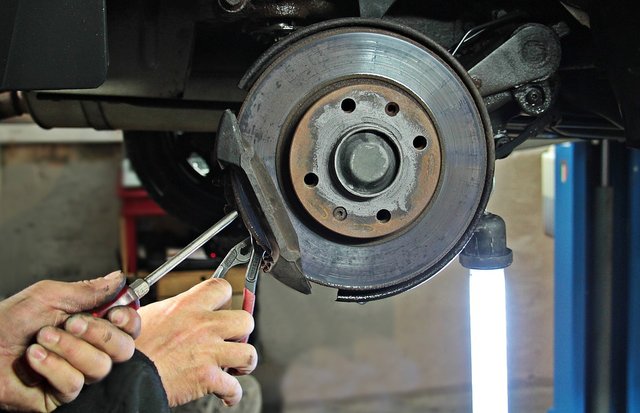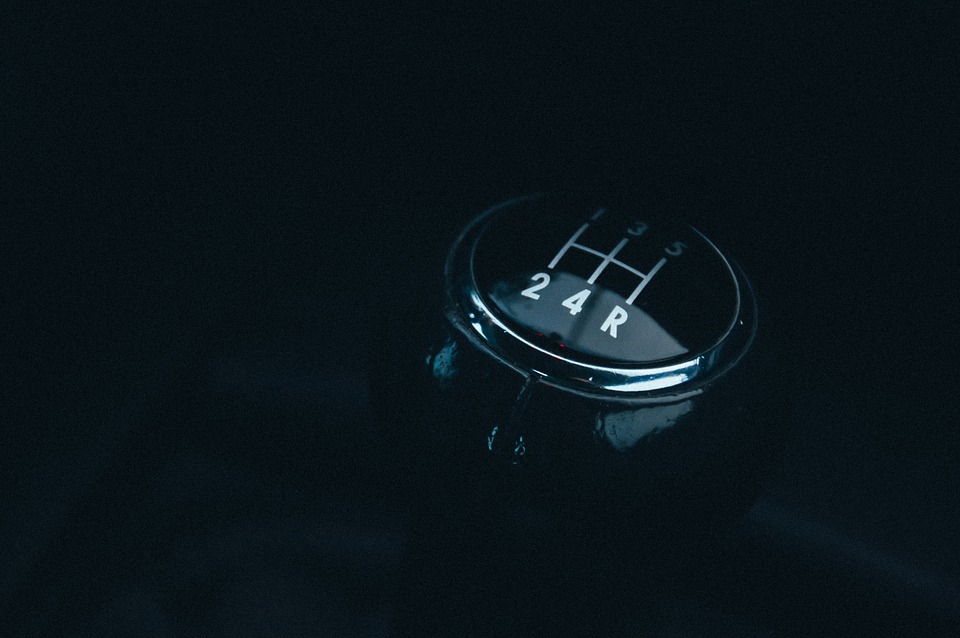[Ita/Eng] Guidare meglio e in sicurezza/Drive better and safely (Pt.3)

Proseguendo questa serie di articoli su come guidare meglio e in sicurezza, il terzo punto della lista (che trovate qui) di argomenti da trattare riguarda l'utilizzo corretto del cambio e del freno.
Un corretto utilizzo del freno è anche più utile del corretto utilizzo dell'acceleratore per controllare l'auto.
Il problema fondamentale che si pone alla guida è riuscire a fermare in tempo la macchina in caso di imprevisto.
Quando si parla di frenata i fattori che entrano in gioco sono tanti: leggi della fisica, tipo di sistema frenante, aderenza asfalto/pneumatici, velocità, esperienza del guidatore che deve valutare correttamente lospazio di frenata.
Asfalto, pneumatici e velocità sono variabili direttamente correlate allo spazio di frenata che diventa un dato oggettivo se analizzato con riferimenti scientifici.
A 100 Km/h, con pneumatici non usurati (per usura si intende il deterioramento del battistrada oltre che l'invecchiamento della gomma, che dovrebbe essere sostituita massimo ogni due anni)e asfalto normale ci si ferma in 30-40 metri, a soli 40 Km/h in più serve il doppio dello spazio.
Grazie all'ABS la soggettività della frenata relativa alla bravura di chi guida è nettamente diminuita, infatti il sistema evita il blocco delle ruote e quindi lo scivolamento incontrollato della vettura non avviene e così la pressione applicata sul freno viene praticamente gestita elettronicamente e non dalla sensibilità del pilota.
L'ABS comunque non può fare miracoli, di conseguenza è opportuno che l'impianto frenante funzioni bene e venga revisionato frequentemente cambiando le pasticche e all'occorrenza anche i dischi, inoltre nelle auto più datate può essere utile anche sostituire i tubi nel caso in cui siano eccessivamente rigidi e soggetti a rotture oltre al liquido che potrebbe aver perso le proprietà che gli consentono di trasferire forza dal pedale alla pinza.
Ma cosa succede in caso di guasto dell'ABS?
Le auto senza ABS tendono a bloccare le ruote anteriori in caso di frenate brusche, il bloccaggio delle ruote postula l'impossibilità di direzionare l'andamento del veicolo.
Un pilota esperto riesce a dosare la forza applicata sul freno e quindi ottenere la massima frenata possibile senza compromettere la direzionalità, ma è più più semplice a dirsi che a farsi.
In caso di brusca frenata quindi per riuscire a manovrare e scartare un ostacolo è opportuno alleggerire la pressione applicata sul pedale, sterzare leggermente, rimettere lo sterzo dritto e solo dopo riprendere a frenare con forza.
A questo punto entrano in gioco le variabili del sottosterzo e del sovrasterzo di cui parlerò prossimamente, ma con queste piccole accortezze è già possibile evitare di schiacciare un gatto o andare contro un muro.
Tuttavia, c'è un altro aspetto da prendere in considerazione e cioè l'utilizzo del cambio in frenata.
Generalmente si è portati a frenare schiacciando la frizione e questo può essere sensato guidando normalmente, al contrario è quanto di più sbagliato possa esserci in caso di frenata improvvisa.
La regola generale è frenare senza toccare frizione e cambio, tuttavia vi sono degli accorgimenti non alla portata di tutti e non semplici da mettere in pratica.
Scalare di marcia e utilizzare la forza del freno motore è sicuramente uno dei modi migliori per ridurre lo spazio di frenata in quanto il cambio aiuterà il sistema frenante a rallentare l'auto e migliorarne la stabilità aumentando la trazione.
Scalare di marcia in curva però toglie, a causa del folle tra una marcia e l'altra, trazione e quindi aderenza all'auto inoltre, anche percorrendo un rettilineo, richiede velocità e abilità particolarmente elevate e quindi non è un operazione semplice da gestire. A tal proposito se ricordate quanti metri percorre un auto al secondo capirete che il minimo errore non è rimediabile.

Continuing this series of articles on how to drive better and safely, the third point on the list (which you can find here) of topics to be discussed concerns the proper use of gearbox and brakes .
A correct use of the brake is more useful than the correct use of the accelerator to control the car.
The fundamental problem at the wheel is to be able to stop the machine in time in the event of an unexpected event.
When it comes to braking the factors that come into play are many: laws of physics, type of braking system, adhesion asphalt / tires, speed, experience of the driver who must correctly evaluate the braking distance .
Asphalt, tires and speed are directly connected to the braking distance which becomes an objective datum if analyzed with scientific references.
At 100 km / h, with worn-out tires and normal asphalt you stop in 30-40 meters, at just 40 km/h more you need twice the space.
Thanks to ABS, the subjectivity of the braking relative to the driving skill is significantly reduced, in fact the system avoids the blocking of the wheels and therefore the uncontrolled sliding of the car does not happen and so the pressure applied on the brake is managed electronically and not by the sensitivity of the pilot.
The ABS, however, can not work wonders, so it is advisable that the braking system works well and is frequently overhauled by changing the tablets and, if necessary, the discs, also in older cars it can also be useful to replace the tubes in case they are excessively rigid and subject to breakage, in addition to the liquid that may have lost the properties that allow it to transfer force from the pedal to the caliper.
But what happens if the ABS fails?
Cars without ABS tend to lock the front wheels in the event of heavy braking, the locking of the wheels does not allow steering.
An experienced driver can measure the force applied to the brake and thus achieve the maximum possible braking without compromising directionality, but it is easier to write than to actually do.
In the event of sudden braking then to be able to maneuver and discard an obstacle should lighten the pressure applied to the pedal, steer slightly, put the steering straight and only after resuming to brake forcefully.
At this point come into play the variables of understeer and oversteer which I will discuss shortly, but with these little precautions you can already avoid crushing a cat or going against a wall.
There is another aspect to consider the use of the gearbox during and before braking.
Generally we tend to brake by crushing the clutch and this may be right in general. On the contrary, it is the wrong thing to do in case of sudden braking.
The general rule is to brake, without touching the clutch and shifting gear, but it is possible to improve the braking with operations that are not for everyone and not easy to put into practice.
Engaging a lower gear and using the brake force is certainly one of the best ways to reduce braking distance as the gearbox will help the brake system slow down the car and improve stability by increasing traction.
Changing gear in the corners, however, takes away traction and adherence to the car. Moreover, even if traveling along a straight line, it requires particularly high speeds and abilities and therefore it is not an easy operation to handle. In this regard, if you remember how many meters a car travels per second you will understand that the slightest error can not be remedied.

